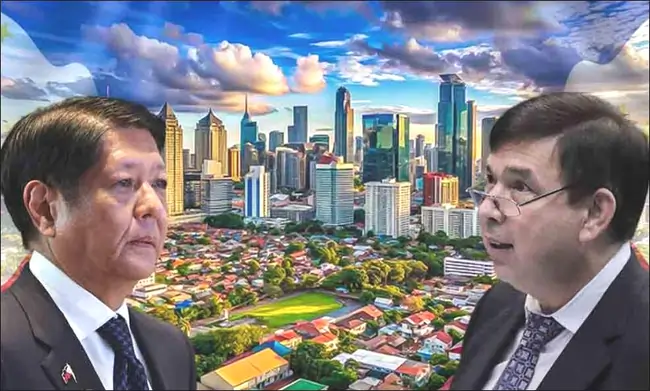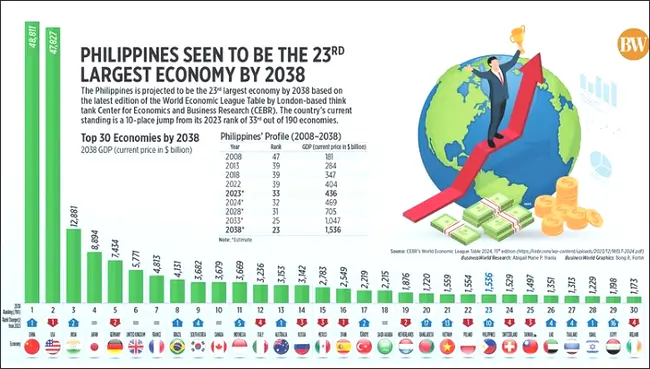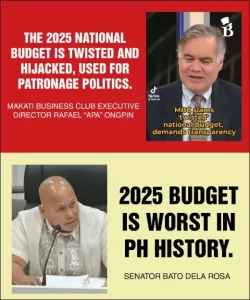
Table of Contents
UN Recognizes Philippines as a Strongest Economy in 2025
The United Nations has recently recognized the Philippines as a Strongest Economy in Southeast Asia for 2025, signaling a promising outlook for the country. According to a report from the UN Department of Economic and Social Affairs, the Philippines’ economic growth is expected to accelerate in 2025 and 2026, driven by domestic demand, public investments, and recent policy reforms.
This growth is also underpinned by the country’s vibrant labor market and growing services sector, making it a key player in the region’s economic landscape.
Economic Growth Forecast: A Bright Future for the Philippines

In its flagship report World Economic Situation and Prospects 2025, the United Nations forecasts that the Philippines’ economy will grow by 6.1% in 2025, with an even stronger performance expected in 2026, rising to 6.2%. This positive economic outlook positions the Philippines as one of the top performers among Southeast Asian nations.
“Philippines as a Strongest Economy growth performers among Southeast Asian economies,” says Zhenqian Huang, an Economic Affairs Officer at the UN Department of Economic and Social Affairs. This projection is based on several key factors that contribute to the country’s economic resilience.
Key Drivers of Economic Growth
Several factors are driving the Philippines’ robust economic growth:
Strong Domestic Demand
A significant driver of the Philippines’ economic expansion is its internal market. As consumer spending rises and private consumption continues to grow, the demand for goods and services remains high.
Public Investments
Ongoing government investments, especially in infrastructure, have provided a strong foundation for long-term economic growth. These investments, including transport and energy projects, are expected to enhance the country’s productivity and competitiveness in the global market.
Investment Policy Reforms
Recent reforms aimed at attracting foreign investments have played a crucial role in strengthening the country’s economic prospects. The government’s efforts to improve the business environment have contributed to increased investor confidence.
Vibrant Labor Market
The Philippines’ young and dynamic workforce is another key driver of its economic strength. With a growing services sector, particularly in information technology and business process outsourcing, the country is positioned to continue expanding its economic output.
Remittance Inflows
The consistent inflow of remittances from overseas Filipino workers (OFWs) has bolstered household income, which in turn supports domestic consumption and economic stability.
Inflation and Trade Outlook
The UN’s report also highlights that inflation in the Philippines is expected to remain stable at 3.0% in both 2025 and 2026, well within the government’s target range of 2-4%. This inflation control is largely attributed to moderating food prices, particularly as the government has reduced the import duty on rice from 35% to 15%, effective until 2028.
“Inflation in the Philippines has been relatively benign and is projected to remain within the central bank’s target range in the near term,” Huang added. This stability is essential for maintaining consumer confidence and supporting continued economic growth.
On the trade front, the Philippines stands to benefit from growing global demand for AI-related electronic products. The recovery of international tourism is also expected to boost the country’s services trade, which plays a significant role in its economy.
Risks to Economic Growth
Despite these positive prospects, the Philippines’ economic outlook is not without risks:
- Trade Tensions: Increasing trade tensions and the potential for higher tariffs could undermine the country’s merchandise trade performance, which is a key part of its economy.
- Monetary Policy Shifts: The Philippines’ current account deficits, which emerged post-pandemic, make the country vulnerable to changes in exchange rates, particularly if there are unexpected shifts in the monetary policies of major developed economies.
- Climate Change: The Philippines is highly vulnerable to natural disasters, and the unpredictable impacts of climate change could lead to significant economic and social losses. The frequency and intensity of typhoons, floods, and other environmental crises could disrupt economic activity and trade.
Conclusion: Philippines as a Strongest Economy
The Philippines is on track to become one of the leading economies in Southeast Asia by 2025, according to the United Nations. With a combination of strong domestic demand, government investments, a growing labor market, and favorable trade conditions, the country’s economic growth is set to continue its upward trajectory.
However, potential risks such as global trade tensions, shifts in monetary policies, and climate-related disasters remain significant challenges that could affect the overall stability of the economy.
As the government continues to implement reforms and enhance its economic policies, the Philippines has the potential to solidify its position as a powerhouse in the region.
FAQs
1. What is the forecasted economic growth for the Philippines in 2025?
The UN forecasts that the Philippines’ economy will grow by 6.1% in 2025, with an even stronger performance expected in 2026, at 6.2%.
2. What are the main drivers of the Philippines’ economic growth?
The main drivers include strong domestic demand, public investments, investment policy reforms, a vibrant labor market, and remittance inflows from overseas Filipino workers.
3. What are the risks to the Philippines’ economic growth?
Risks include potential trade tensions, exchange rate volatility due to current account deficits, and the vulnerability to climate change, particularly natural disasters.
Disclaimer
The information provided in this article: UN Recognized Philippines as a Strongest Economy in 2025 is based on the latest report from the United Nations and other reliable sources available at the time of publication. Economic forecasts are subject to change due to unforeseen global and local developments.
The Philippines’ economic performance will depend on various factors, including domestic and international economic conditions, government policies, and environmental factors.
TechWirings does not endorse or explicitly support any views or actions expressed in this content.










